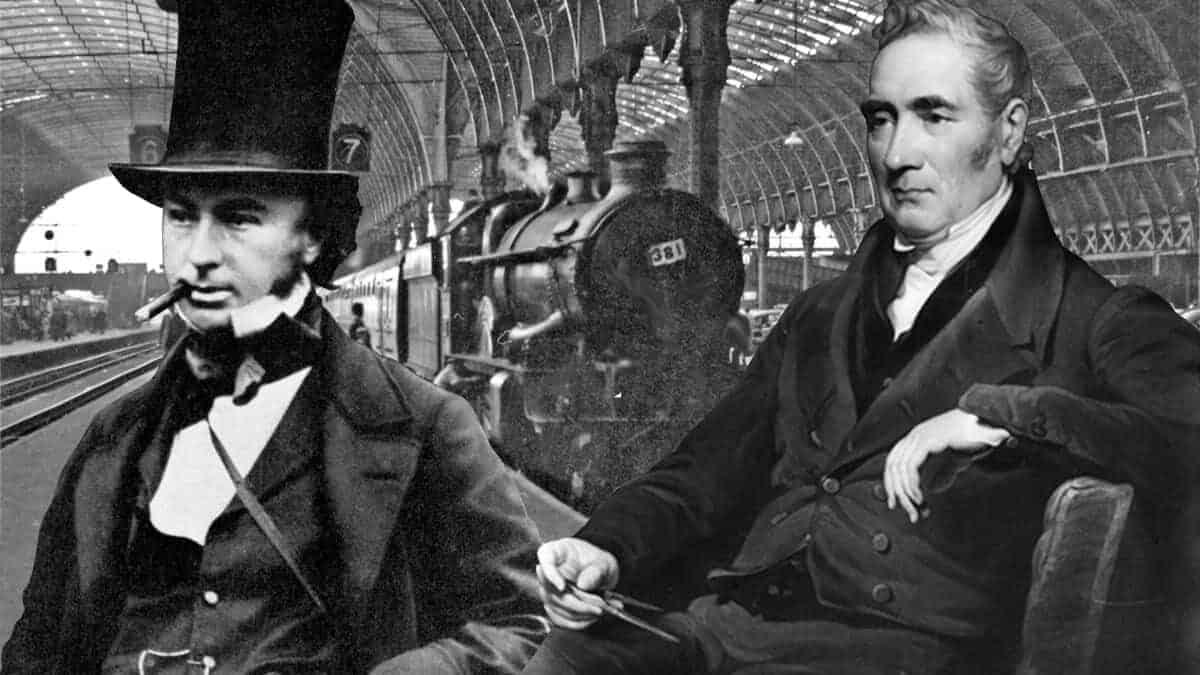Loads of really clever people helped build Britain’s railways…
You might recognise a few of these names from classes at school, or from walks around cool railway museums!
Here are some of the people who helped make the railways a reality – from drawing up the blueprints to laying the track.
Find out more about George Stephenson, Isambard Kingdom Brunel, and the navvies!

George Stephenson built his first train, the Blucher, at Killingworth Colliery and demonstrated that a train could run along an iron track at six miles an hour without a stationary engine.
He used a gauge (the width of track) of 4 feet, 8.5 inches when designing the Stockton to Darlington Railway.
This is known as the standard gauge and is used in Britain today!

Isambard Kingdom Brunel was the chief engineer of the Great Western Railway (GWR) which links London and Bristol!
It was often referred to as “God’s Wonderful Railway” because the railway was so smooth…
Brunel extended the railway to connect to Plymouth and Cornwall, built the Tamar Bridge and Box Tunnel to overcome major obstacles on the route.
Brunel used a wider track gauge than Stephenson, of 7 feet, 3 inches.
However, as 90% of the railway used Stephenson’s standard gauge, an Act of Parliament in 1846 stated that all railways had to be built to the standard gauge making it easier for trains to run on all tracks across the country.

The people who did the physical work to construct and maintain the railways were called Navvies.
Most of the work was done by hand, using picks and shovels.
Work was dangerous, and many navvies died due to accidents such as tunnels collapsing or explosions.
Navvies moved across the country with the railway construction, living in cheap lodgings or temporary shanty towns in the open country, accompanied by their children.
There were around 250,000 navvies in 1850.
Find out more about Britain’s railways!
Bex and Dan from Fun Kids learn all about the future of Britain’s railways, from signals to trains and tracks, in this new podcast series!
 Britain’s Digital Railways, in association with the Royal Academy of Engineering Ingenious scheme
Britain’s Digital Railways, in association with the Royal Academy of Engineering Ingenious scheme
Add a commentBritain’s Digital Railways
Find out about Britain's railways - from signals and trains to tracks and safety!
More From Britain’s Digital Railways



